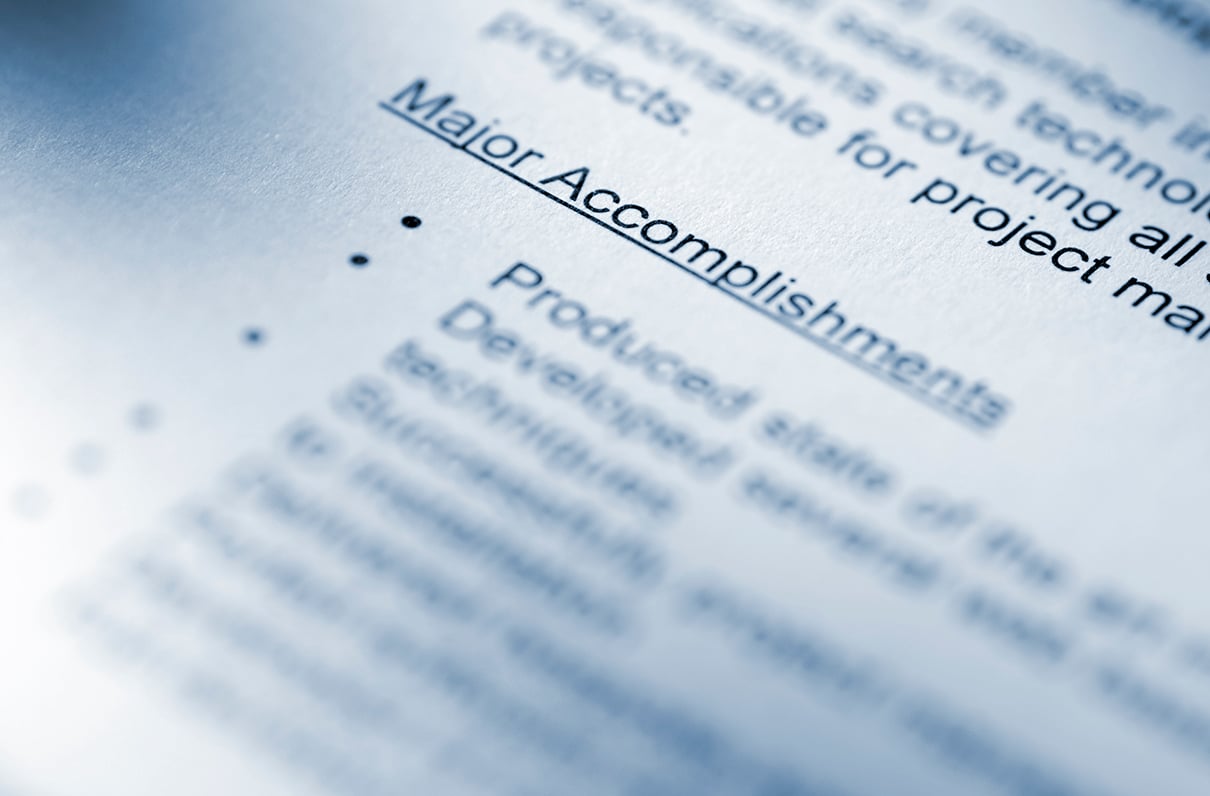A professional biography is a conversation starter. It is broader than a résumé but has the same goal of enticing the reader to want to know more about you. (Need help writing your résumé? Read “Top 10 Tips for Writing a Military Résumé.”) Whereas a résumé is intended to get you an interview, a professional biography is intended to get you a meeting - or make the reader look forward to a meeting you already have scheduled! It is a subtle marketing tool and should be written so any audience, military or civilian, can understand it and be intrigued by what it says.
First, get yourself in the right frame of mind. Think about your brand: how you want to be perceived. Put on your civilian hat. Avoid military jargon and acronyms and abbreviated sentences without subjects. Don't try to translate military titles (i.e., CO) into civilian titles (i.e., CEO), because they don't correlate. (Get tips about translating your title in skills.) It's much better to simply describe your role (e.g., “led a 300-person organization”). Write your professional biography in third-person voice, refer to yourself as Mr. or Ms., rather than by rank or first name, and use active verbs. Use a professional conversational tone.
The long-form professional biography will be no more than one page (you also should have a short one-paragraph version and an even shorter two-line version). Your name, without rank, goes at the top. Consider including a nice-quality photo of yourself in business attire, not in uniform. You can use the same photo for your LinkedIn profile. Include your current or most recent title under your name. In the first paragraph, highlight a major career achievement, such as a high-visibility project that garnered praise or achieved significant results. Summarize a few other professional achievements in the second paragraph. Note the emphasis on achievements vice a chronological list of jobs. The third paragraph can discuss specific skills and strategic connections, such as volunteer activity with a relevant organization. In the final paragraph, cite education, other credentials and professional honors, and perhaps a personal interest or two.
Use your professional biography to raise your visibility and establish your credibility. If you do public speaking outside the military, provide a copy for the event program and/or introduction. Attach it to your LinkedIn page. One of the most effective ways to use a professional biography is to send it to someone with whom you've requested an informational (not employment) interview. Send an email a few days before the scheduled interview saying something to the effect of, “I am looking forward to talking with you on Tuesday about your experience as a program manager with Acme. I'd greatly appreciate your insights on how I might best position myself to transition into the field and have attached my biography to help facilitate our conversation.” You might find the person also forwards your biography to others in his or her own network who might be able to further assist in your job search. Once you start your new career, keep your biography updated. It may be used to introduce you to new colleagues and business prospects and at future public speaking events.

